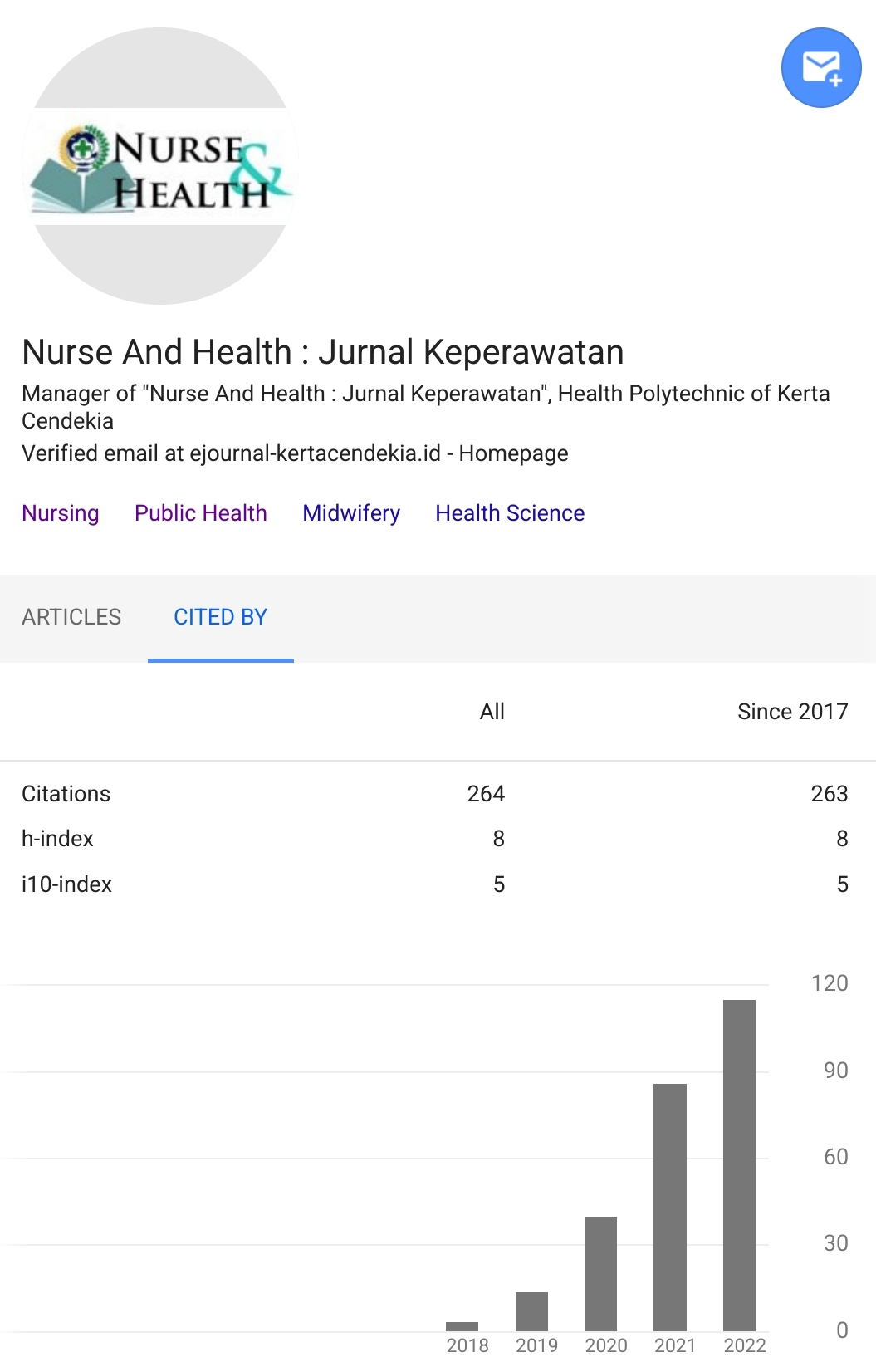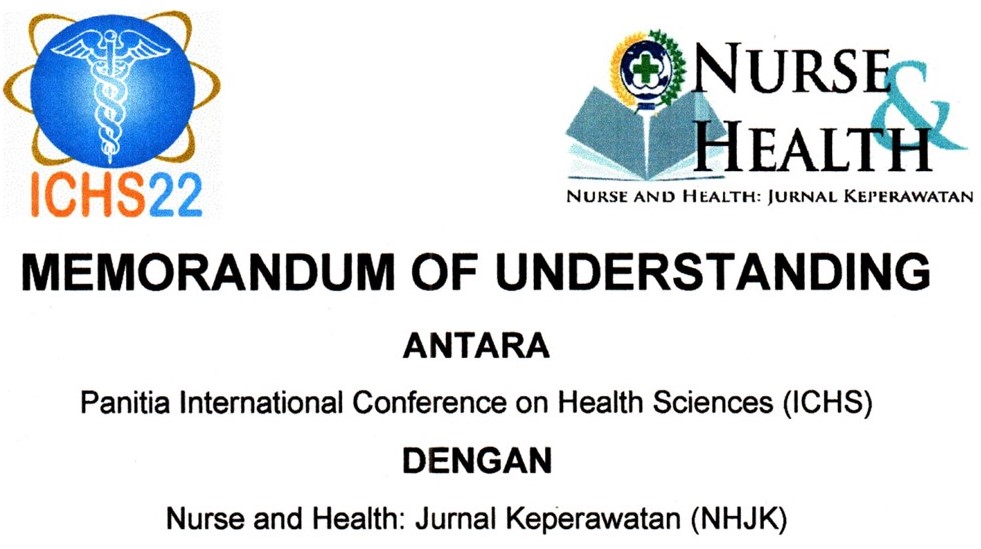THE EFFECT OF SUITABILITY OF PROVIDING COMPLEMENTARY FOODS ON THE INSIDENCE OF STUNTING AND ANEMIA IN TODDLERS
DOI:
https://doi.org/10.36720/nhjk.v9i2.198Abstract
Background: Stunting is a chronic nutritional problem in toddlers characterized by height that is not appropriate for their age. Children who are stunted will be at risk for disease and when growing up are at risk for degenerative diseases. The effect of stunting does not only affect health but also affects children's intelligence. Apart from stunting, anemia in children is also a health problem in developing countries (Ministry of Health, 2018).
Objectives: The purpose of this study was to analyze the accuracy of giving complementary foods to the incidence of stunting and anemia in toddlers.
Methods: The type of research used is analytical survey with a retrospective design. The population in this study are all toddlers at Porong Public Health Center who meet the inclusion criteria. The sample of this research is taken by cluster random sampling technique of 99 respondents. Data were collected using a questionnaire on complementary complementary feeding practices based on WHO (2003) regarding the principles of providing complementary foods. The reliability test of this questionnaire obtained a Cronbach’s Alpha value 0.723. Stunting Variables determined by calculating the Z-Score PB/U and Anemia variable was determined based on the measurement of the hb level Descriptive statistics and Chi-square Test with significance value less than 0.05 were used to analyzed data.
Results: The results of this study are that there is an effect of the suitability of complementary feeding on the incidence of stunting and anemia, with a (Ï value = 0.001) for the variable incidence of stunting and (Ï value = 0.021) for the variable incidence of anemia.
Conclusion: Socialization on complementary complementary foods must be carried out frequently to avoid stunting and anemia so that the government's target to reduce stunting can be achieved.
Â
Keywords: Complementary Foods, Stunting, Anemia, Toddlers
Downloads
References
Agustin, A. Utami, U. (2017). Hubungan Ketepatan Pemberian MPASI dengan Kejadian Anemia di Posyandu Wilayah Kerja Puskesmas Tasikmadu. Maternal 2(2) ;118-125
Bakta IM. (2009). Pendekatan terhadap pasien anemia. Buku Ajar Ilmu Penyakit Dalam. Edisi V. Jakarta: Interna Publishing; hal. 1109-15.
Dewey KG. (2001). Nutrition, growth, and complementary feeding of the breastfed infant. Ped Clin North Am.; 48:87-104
Dwitama, YS. Zuhairini, Y. Djais, J. (2018). Hubungan Pemberian ASI Eksklusif dan Makanan Pendamping ASI terhadap Balita Pendek Usia 2-5 tahun. JSK 3(3) ; 142-148
Hanum, NH. (2019). Hubungan Tinggi Badan Ibu dan Riwayat Pemberian MP-ASI dengan Kejadian Stunting pada Balita Usia 24-59 Bulan. Amerta Nutrition: 78-84
Ilmanisak, R. Pudjirahayu, A. Aswin, AAG. (2017). Edukasi MPASI, Sikap Ibu, dan Tingkat Konsumsu Energi Protein Baduta Stunting Usia 7-24 bulan. Jurnal Pendidikan Kesehatan 6(1) ; 16-26
Kemenkes RI. (2018). Buku Saku Pemantauan Status Gizi. Jakarta: Direktorat Gizi MAsyarakat.
Kemenkes RI. (2018). Situasi Balita Pendek (Stunting di Indonesia). Jakarta: Pusat Data dan Informasi Kesehatan.
Lestari ED, Moelya AG, Rohana E, Wiboworini B. (2007). Relation of complementary foods and anemia in urban underprivileged children in Surakarta. Paediatr Indones; 47:196-201
Mardewi KW, Sidiartha IGL, Gunawijaya E. Low level of zinc serum as short stature risk factor in children. (Dalam proses publikasi di Pediatrica Indonesiana)
Prihutama, NY. Rahmadi, A. Hardaningsih, G. (2018). Pemberian Makanan Pendamping ASI Dini sebagai Faktor Risiko Kejadian Stunting pada Anak Usia 2-3 tahun. Jurnal Kedokteran Diponegoro 7(2) ; 1419-1430
Tim IDAI. (2014). Pendekatan Diagnosis dan Tata Laksana Masalah Makan pada Batita di Indonesia. Jakarta: UKK Nutrisi dan Metabolik IDAI.
WHO. (2003). Global strategy for infant and young child feeding. Geneva: World Health Organization
World Health Organization. (2003). Guiding Principles for Complementary Feeding of the Breastfed Child. Geneva; WHO-PAHO
Downloads
Published
How to Cite
Issue
Section
Citation Check
License
Authors who publish with Nurse and Health: Jurnal Keperawatan agree to the following terms:
- Authors retain copyright licensed under a Creative Commons Attribution-NonCommercial 4.0 (CC BY-NC 4.0), which allows others to remix, tweak, and build upon the authors' work non-commercially, and although the others' new works must also acknowledge the authors and be non-commercial, they don't have to license their derivative works on the same terms.
- Authors are permitted and encouraged to post their work online (e.g., in institutional repositories or on their website) prior to and during the submission process, as it can lead to productive exchanges, as well as earlier and greater citation of published work (See The Effect of Open Access). Authors can archive pre-print and post-print or publisher's version/PDF.









